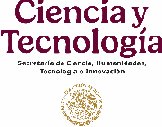- CIMAT Guanajuato, Auditorio J.A. Canavati
12:00 hrs. Topological, Geometric and Combinatorial Properties of Random Polyominoes
Érika Berenice Roldán Roa
Examen para la Obtención del grado de Doctora en Ciencias con Orientación en Probabilidad y Estadística
Resumen: We study two models of random shapes in this thesis: the Eden Cell Growth Model (EGM) and uniform and percolation distributed polyominoes (also known as lattice-based animals). These models have long been of interest in mathematical physics, probability, and statistical mechanics. Both structures have interesting topological, combinatorial, and geometrical properties. However, until now, tools from stochastic topology and topological data analysis have not been used to study these properties. By introducing these methods and techniques, we established and proved new results that increase the understanding of topological, geometric, and combinatoric properties of these random models.
First, we study the maximum number of holes (the rank of the first homology group) that a polyomino with a given number of tiles can have. We prove a tight bound for the asymptotic behavior and give an exact formula for an infinite sequence of natural numbers for this maximum number of holes. Our second set of contributions of this thesis are about the rate of growth of the expectation of the number of holes in a polyomino with uniform and percolation distributions. We prove the existence of linear bounds for the expected number of holes of a polyomino with respect to both the uniform and percolation distributions. Furthermore, we exhibit particular constants for the upper and lower bounds in the uniform distribution case. Finally, we characterize how the rank of the first homology group, of the stochastic process defined by the EGM, changes in time. This allowed us to design and implement a new algorithm that computes the persistence homology associated to this stochastic process at each time and that keeps track of geometric features of the homology of the process as the area and location of the holes. We present and analyze the results of the computational experiments obtained with this algorithm. We also state conjectures based on these experiments about the asymptotic behavior of the number of holes, the locations of these holes, their associated area, and other geometric and topological properties of this stochastic process.
